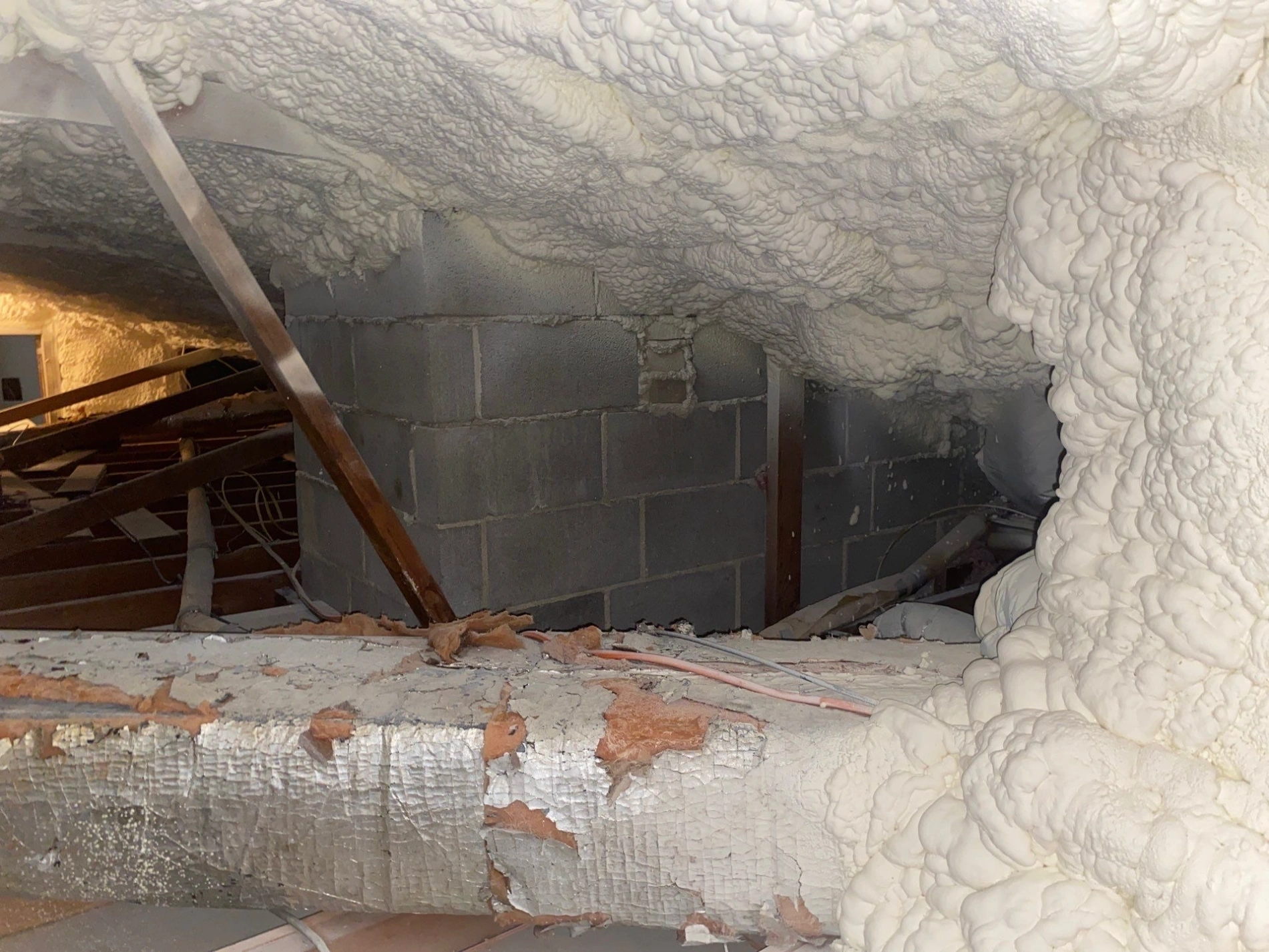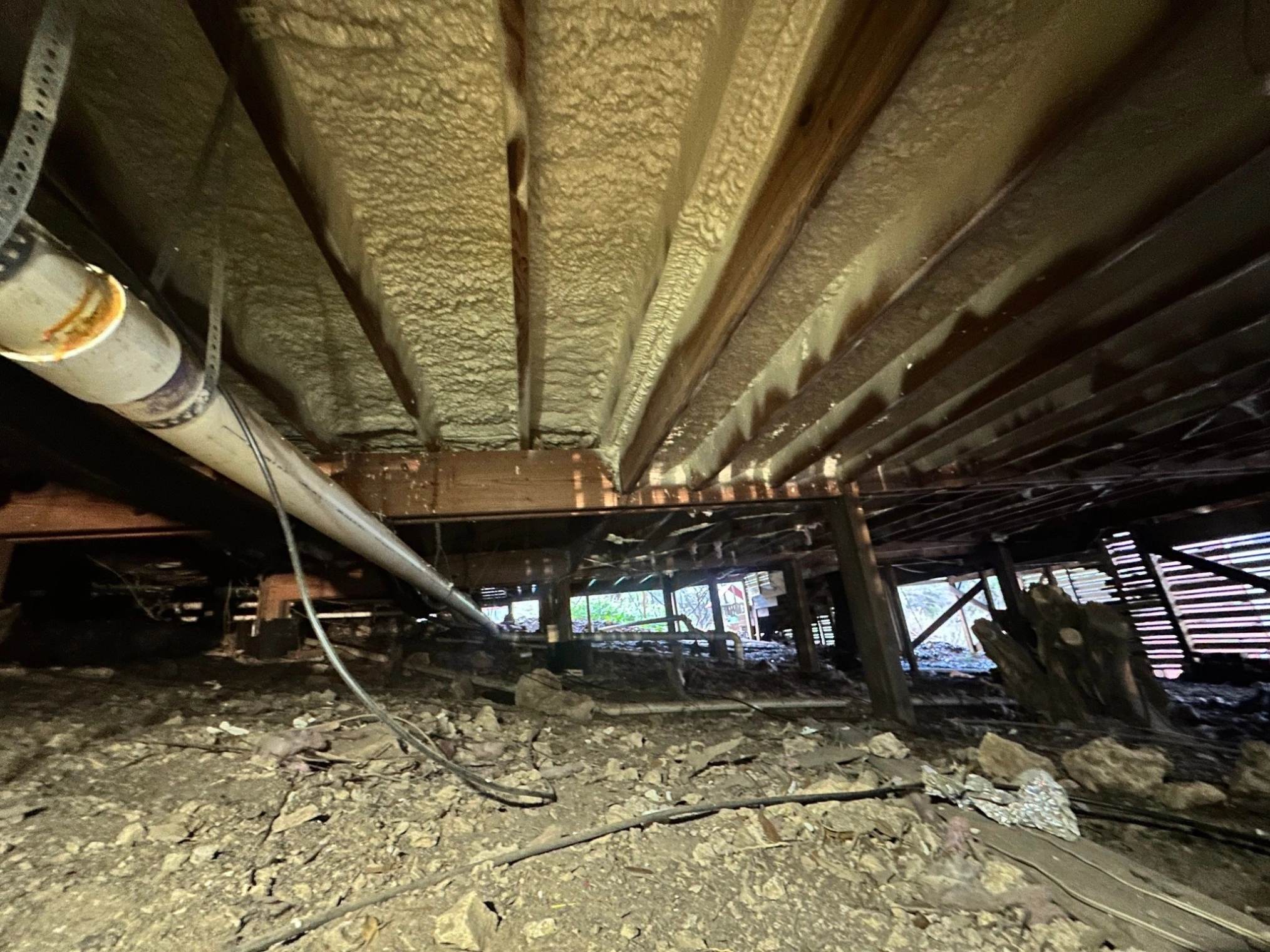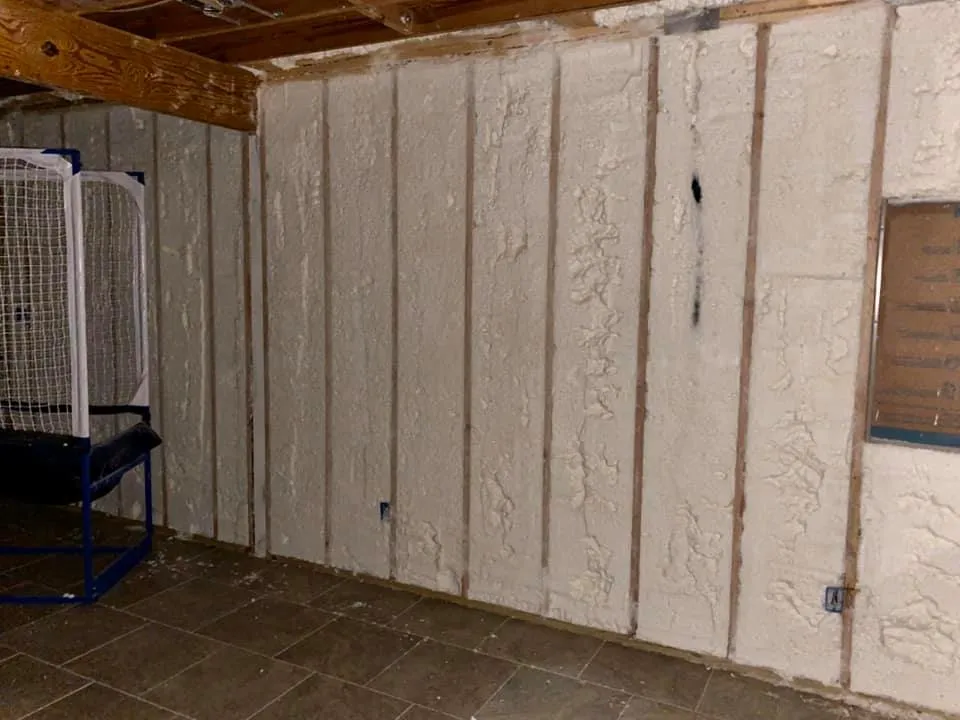Spray foam insulation transforms crawl space environments by creating an effective thermal and moisture barrier that addresses the unique challenges of below-grade spaces. The primary considerations involve choosing between open-cell and closed-cell formulations, ensuring proper ventilation modifications, and understanding moisture management requirements specific to your climate zone.
Professional installation becomes critical in crawl spaces due to confined working conditions, substrate preparation needs, and the permanent nature of spray foam application. Based on decades of installation experience across various climates, successful spray foam applications in crawl spaces require careful evaluation of existing moisture conditions, proper surface preparation, and coordinated mechanical system modifications to optimize performance and prevent costly remediation issues.
Understanding Spray Foam Performance in Crawl Spaces
Crawl spaces present distinct insulation challenges that differ significantly from attic or wall applications. Ground moisture, limited air circulation, and temperature differentials create conditions where traditional insulation materials often fail or deteriorate rapidly.
Bonus Tip: Always conduct moisture testing using electronic moisture meters on foundation walls and floor joists before spray foam application. Moisture content above 19% requires remediation before installation.
Spray Foam Types Comparison
| Feature | Open-Cell Foam | Closed-Cell Foam |
|---|---|---|
| R-Value per inch | 3.6-3.8 | 6.0-6.5 |
| Vapor Permeability | 7-8 perms | <1 perm |
| Cost per sq ft | $0.75-$1.25 | $1.50-$2.50 |
| Moisture Management | Allows vapor transmission | Complete moisture barrier |
| Structural Support | Minimal | Adds structural strength |
| Best Application | Vented crawl spaces | Unvented crawl spaces |
Climate Zone Considerations
Different climate zones require specific approaches to crawl space spray foam applications:
- Hot, Humid Climates (Zones 1-3): Closed-cell foam becomes essential for controlling moisture intrusion from exterior sources. Foundation walls require complete coverage to prevent condensation issues during cooling seasons.
- Mixed Climates (Zones 4-5): Both open-cell and closed-cell options work effectively, with choice depending on existing ventilation systems and moisture control strategies.
- Cold Climates (Zones 6-8): Closed-cell foam provides superior thermal performance and prevents freeze-thaw cycles that damage foundation materials.
Technical Application Requirements
Professional spray foam installation in crawl spaces demands specific technical considerations that significantly impact long-term performance. Surface preparation, environmental conditions, and application techniques require expertise developed through extensive field experience.
Application Specifications
| Parameter | Open-Cell Requirements | Closed-Cell Requirements |
|---|---|---|
| Minimum Thickness | 3-4 inches | 2-3 inches |
| Surface Temperature | 60-90°F | 60-85°F |
| Humidity Levels | <85% RH | <80% RH |
| Substrate Moisture | <19% | <16% |
| Cure Time | 8-24 hours | 24-48 hours |
| Application Rate | 200-400 sq ft/hour | 150-300 sq ft/hour |
Foundation Wall Preparation
Proper substrate preparation determines spray foam adhesion and longevity. Concrete block foundations require different preparation than poured concrete surfaces. Efflorescence removal, crack sealing, and moisture testing must occur before foam application.
According to the North American Insulation Manufacturers Association (NAIMA), improper surface preparation accounts for 60% of spray foam performance failures in below-grade applications. This statistic underscores the importance of professional assessment and preparation protocols.
Bonus Tip: Use mechanical wire brushes rather than chemical cleaners for efflorescence removal. Chemical residues can interfere with foam adhesion even after thorough rinsing.
Ventilation System Modifications
Converting from vented to unvented crawl space designs requires coordinated mechanical system modifications. HVAC equipment, ductwork placement, and humidity control systems need professional evaluation and potential upgrades.
Mechanical System Integration
Unvented crawl spaces with spray foam insulation require conditioned air supply or dedicated dehumidification systems. The Building Performance Institute recommends supplying conditioned air at 1 CFM per 50 square feet of crawl space area to maintain proper humidity levels year-round.
Existing HVAC ductwork benefits from spray foam encapsulation, improving system efficiency by 15-25% according to Department of Energy studies. However, equipment access panels and service areas require careful planning during foam application to maintain serviceability.
Moisture Management Strategies
Successful spray foam applications in crawl spaces require comprehensive moisture management that extends beyond the insulation itself. Ground vapor barriers, drainage systems, and humidity control create integrated solutions that prevent moisture-related problems.
Ground Vapor Barrier Requirements
| Barrier Type | Thickness | Permeability | Sealing Method |
|---|---|---|---|
| Polyethylene | 6-10 mil | <0.1 perm | Tape and adhesive |
| Cross-laminated | 8-12 mil | <0.01 perm | Heat welding |
| Reinforced | 10-15 mil | <0.005 perm | Mechanical fastening |
Ground moisture control requires professional-grade vapor barriers that extend up foundation walls and connect to spray foam applications. Sealing methods vary based on substrate materials and local building codes.
Things to Consider Before Making a Decision
Several critical factors influence spray foam success in crawl space applications. Professional evaluation of these elements prevents costly mistakes and ensures optimal long-term performance.
- Existing Moisture Issues: Any signs of water intrusion, mold growth, or structural moisture damage require remediation before spray foam installation. Encapsulating moisture problems with foam creates expensive future remediation scenarios.
- HVAC System Compatibility: Existing ductwork, equipment placement, and ventilation systems may require modifications or upgrades to work effectively with unvented crawl space designs
- Access Requirements: Consider ongoing maintenance needs for plumbing, electrical, and HVAC systems. Once applied, spray foam cannot be easily removed for repairs or modifications.
- Local Building Codes: Code requirements vary significantly by jurisdiction regarding crawl space insulation, ventilation, and fire ratings. Professional contractors understand local compliance requirements.
- Budget Considerations: Total project costs include spray foam materials, installation labor, mechanical system modifications, and vapor barrier installation. Comprehensive quotes prevent unexpected expenses.

Stellrr Insulation & Spray Foam Services for Crawl Space Applications
Stellrr Insulation & Spray Foam provides specialized crawl space insulation solutions designed for optimal performance in challenging below-grade environments.
- Crawl Space Insulation: Complete assessment and installation of spray foam systems specifically designed for crawl space moisture and thermal conditions. Professional substrate preparation and coordinated vapor barrier installation ensure long-term performance.
- Closed Cell Insulation: Premium closed-cell spray foam applications that provide superior moisture control and thermal performance for unvented crawl space designs. Includes mechanical system coordination and code compliance verification.
- Open Cell Insulation: Cost-effective open-cell foam solutions for vented crawl spaces where vapor permeability requirements allow moisture management through controlled air exchange.
- Insulation Removal: Professional removal of failed traditional insulation materials and proper disposal before spray foam installation. Includes mold remediation and structural moisture assessment services.
Common Questions About Crawl Space Spray Foam
Can spray foam be applied over existing insulation?
Existing insulation must be completely removed before spray foam application. Trapped moisture and debris between materials creates performance problems and potential mold issues.
How long does spray foam installation take in crawl spaces?
Installation time varies based on crawl space size and access conditions. Typical residential crawl spaces require 1-2 days for complete spray foam application including preparation and curing time.
What happens if water enters after spray foam installation?
Closed-cell spray foam creates effective moisture barriers, but standing water requires immediate removal. Professional assessment determines if foam damage requires partial replacement or if drainage improvements prevent future issues.
Do mechanical systems need modification for spray foam crawl spaces?
Most unvented crawl space designs require HVAC system modifications or dedicated dehumidification equipment. Professional evaluation determines specific requirements based on existing equipment and local climate conditions.
Making the Right Choice for Your Crawl Space
Spray foam insulation provides exceptional performance in crawl space applications when properly selected and professionally installed. The key lies in matching foam type to specific moisture conditions, climate requirements, and mechanical system compatibility.
Successful projects require comprehensive evaluation of existing conditions, proper surface preparation, and coordinated system modifications. Professional installation ensures compliance with building codes while maximizing long-term performance and energy efficiency benefits.
Evaluate your specific crawl space conditions, moisture control needs, and budget considerations before making final decisions. Professional assessment identifies the most effective solutions for your unique circumstances and long-term goals.
Get Expert Insulation Guidance
Professional crawl space insulation requires specialized knowledge and experience to ensure optimal performance and code compliance. Stellrr Insulation & Spray Foam provides comprehensive evaluation and installation services designed for challenging crawl space environments.
Contact the insulation specialists for detailed assessment of your crawl space conditions and customized spray foam solutions that deliver lasting performance and energy efficiency benefits.
Stellrr Insulation & Spray Foam
Phone: (512) 710-2839
Email: info@stellrr.com
Frequently Asked Questions
How long does spray foam last in crawl space applications?
Professional-grade spray foam insulation maintains performance characteristics for 30-50 years when properly installed and protected from physical damage. Closed-cell formulations typically provide longer service life due to superior moisture resistance and structural stability.
Can homeowners install spray foam in crawl spaces themselves?
Spray foam installation requires specialized equipment, safety training, and technical expertise that make professional installation essential. Improper application creates fire hazards, structural damage, and costly remediation requirements that exceed professional installation costs.
What safety considerations apply to crawl space spray foam?
Professional installations include respiratory protection, proper ventilation during application, and occupant evacuation protocols. Curing foam releases chemical vapors that require controlled exposure and adequate air exchange before re-occupancy.
How does spray foam affect crawl space humidity levels?
Closed-cell spray foam installations typically reduce crawl space humidity by 40-60% compared to traditional insulation methods. However, complete moisture control requires integrated vapor barriers, drainage systems, and mechanical ventilation or dehumidification equipment.
What warranty coverage applies to crawl space spray foam?
Professional installations typically include 10-20 year material warranties and 2-5 year installation warranties. Coverage varies by manufacturer and contractor, with closed-cell applications generally receiving longer warranty periods due to superior durability characteristics.





